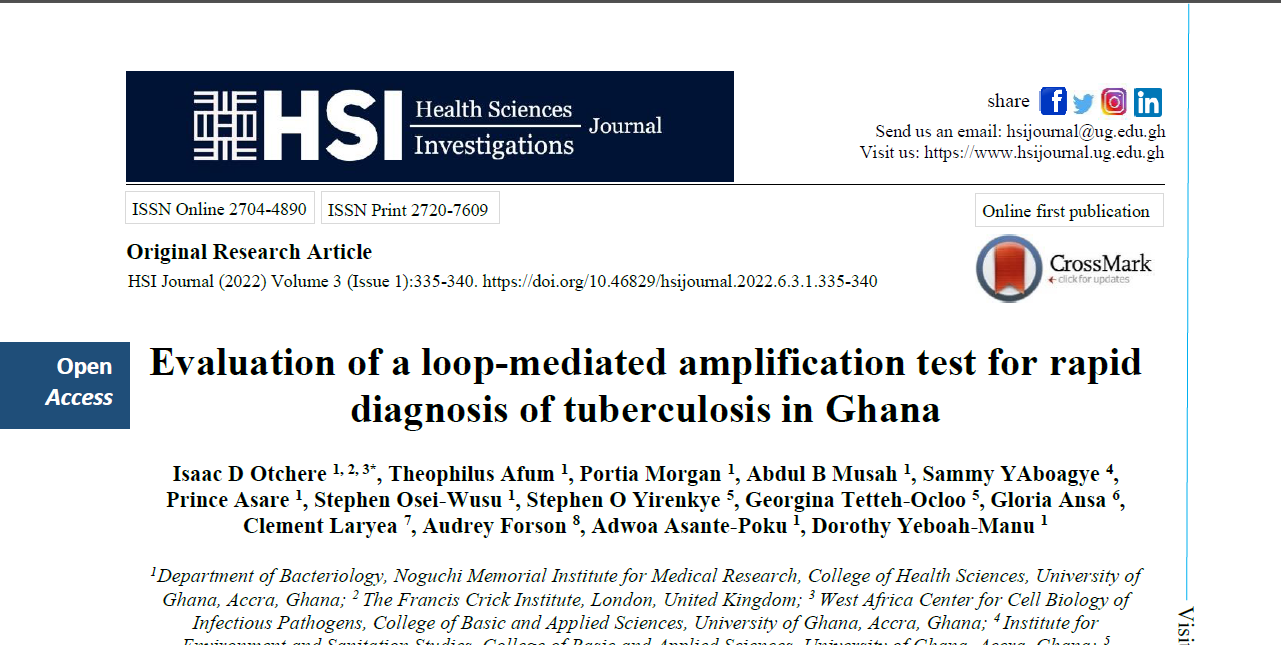Evaluation of a loop-mediated amplification test for rapid diagnosis of tuberculosis in Ghana
Potential of TB-LAMP assay as a primary diagnostic tool in Ghana
Abstract
Background: The unavailability of cheap but rapid, highly sensitive and specific diagnostic tools for tuberculosis (TB) remains a major setback for the global efforts to end TB by the year 2035. Nucleic acid-based TB diagnostic assays remain the most recommended and the Gene Xpert MTB/RIF (Cepheid Sunnyvale, United States) is the most widely used which has an added advantage of detecting rifampicin resistance. However, the machinery requirement of the GeneXpert MTB/RIF makes it unsuitable for use in rural and resource-limited settings eventually challenging the global efforts to end TB by the year 2035. Loop-mediated amplification (LAMP) of DNA technology presents a cheap alternative for the precision diagnosis of TB.
Objective: In this study, we evaluated the specificity and sensitivity of the TB-LAMP assay kit manufactured by Human Diagnostics Worldwide (Geneva, Switzerland) for the diagnosis of TB in Ghana.
Methods: We assessed the performance of the TB-LAMP assay against a panel of genotyped mycobacteria (including members of the Mycobacterium tuberculosis complex (MTBC) and a couple of nontuberculous mycobacteria) and sputum samples collected from presumptive TB patients using sputum culture as reference diagnostic assay.
Results: The TB-LAMP assay was found to be very specific in detecting members of the MTBC as positive samples whereas the nontuberculous mycobacteria were all negative. Using sputum culture as a reference, the TB-LAMP assay was found to have 99.2% sensitivity, 97.2% specificity, 98.5% positive predictive value (PPV), 98.6% negative predictive value (NPV) and 98.5% accuracy for detection of MTBC among sputum samples collected from presumptive TB patients in Ghana. The TB-LAMP assay additionally showed 100% accuracy in detecting members of the MTBC among a panel of mycobacteria.
Conclusion: The TB-LAMP is highly sensitive and specific for the diagnosis of TB. It is thence recommended for use as a primary screening tool before referral for culture and sensitivity assays for better management of TB.


